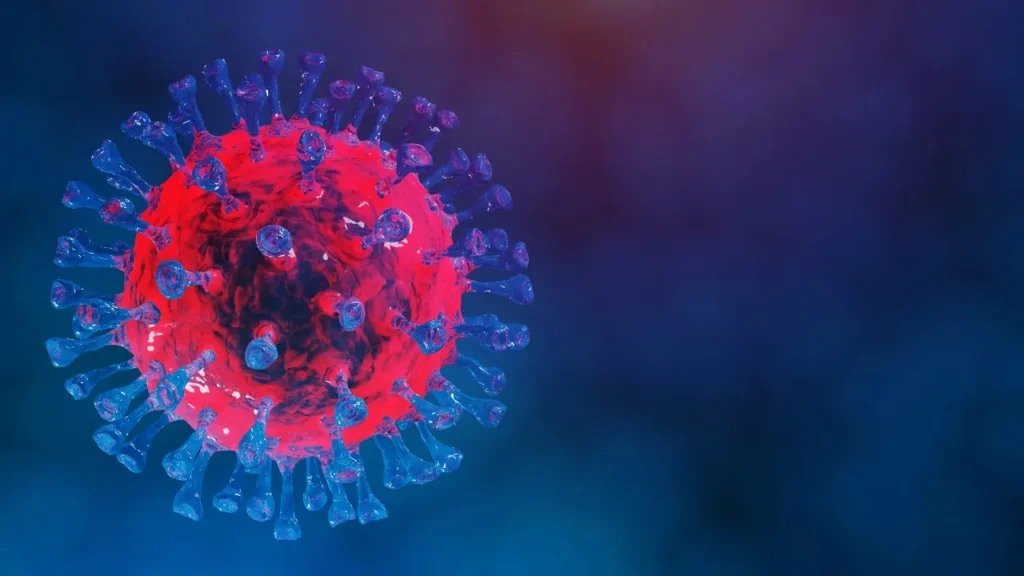The perennial herbaceous plant Rumex crispus, commonly known as Yellow Dock, has been used for its medicinal and nutritional properties for several centuries. It is indigenous to Europe and Western Asia. The diverse health benefits of its usage in traditional medicine, particularly in North America, have contributed to its widespread adoption. This article aims to investigate the characteristics of Yellow Dock, its medicinal advantages, recommended dosage, adverse effects, possible substance interactions, and other relevant details to facilitate the prudent consumption of this supplement.
You May Also Like:
The Best Supplements for Memory and Brain Fog: 5 Top Brands Reviewed
Finding the Best Supplements for Brain Fog After COVID: 5 Top Brands Reviewed
Yellow Dock: Benefits, Dosage, Side Effects, Drug Interactions, And Other Important Information is an original (NootropicsPlanet) article.
Nature of Yellow Dock
Rumex crispus, commonly known as yellow dock, is an herbaceous perennial plant originating in Europe and Western Asia. It is classified under the Polygonaceae family and is distinguished by its notable yellow roots, elongated leaves, and tall, slender flowering stalks. The plant has been used as a medicinal and nutritional supplement for centuries, with its bioactive compounds primarily sourced from its roots.
Health Benefits of Yellow Dock
Historically, yellow dock has been utilized to treat diverse maladies, such as gastrointestinal disorders, dermatological afflictions, and respiratory ailments. Yellow dock has been linked to various health benefits as a dietary supplement.
Digestion and its impact on overall health
The anthraquinone in yellow dock renders it efficacious as a natural laxative, thereby facilitating the management of constipation and fostering regularity in bowel movements. Furthermore, the plant’s anti-inflammatory properties have the potential to mitigate gastrointestinal inflammation, indicating its possible efficacy as a treatment for ailments such as irritable bowel syndrome (IBS) and inflammatory bowel disease (IBD).
Maintenance of skin health
Yellow dock has been found to contain tannins and flavonoids that exhibit antioxidant and anti-inflammatory characteristics, potentially advantageous for diverse skin ailments. The plant’s topical application has been utilized to treat various conditions, including eczema, psoriasis, and dermatitis. The astringent properties of this substance aid in the tightening and toning of the skin, rendering it a potent solution for minor cuts, wounds, and abrasions.
Respiratory health
Historically, yellow dock has been employed as an expectorant to mitigate respiratory ailments, including bronchitis and asthma. The substance’s anti-inflammatory properties can potentially reduce inflammation in the respiratory tract, and its expectorant effects may facilitate the expulsion of mucus and other irritants.
Antioxidant and anti-cancer properties
Yellow dock’s flavonoids possess antioxidative and anti-neoplastic characteristics, rendering the plant a viable contender for cancer prophylaxis and therapy. Research has demonstrated that the administration of yellow dock extract has the potential to trigger apoptosis, or programmed cell death, in specific types of cancer cells and impede tumor progression.

Chemistry of Yellow Dock
Yellow dock’s therapeutic attributes are due to its various bioactive constituents, including anthraquinones, tannins, and flavonoids. These compounds provide the plant with diverse health benefits.
Yellow dock contains anthraquinones, including emodin and chrysophanol, which are considered to be the main bioactive compounds. The medicinal applications of these organic compounds are attributed to their laxative and anti-inflammatory properties, which are considered essential. Tannins are a polyphenolic compound class that exhibits astringent and antioxidant characteristics. They play a role in enhancing yellow dock’s anti-inflammatory properties and facilitating wound healing. Flavonoids, a heterogeneous class of phytochemicals, are recognized for their antioxidative, anti-inflammatory, and anticarcinogenic attributes, thereby augmenting the therapeutic capacity of plants.
Physiological Mechanisms of Action
Yellow dock’s health benefits are attributed to its diverse bioactive compounds, which exert their effects through distinct physiological mechanisms. This study explores the mechanisms correlated with anthraquinones, tannins, and flavonoids in yellow dock.
Anthraquinones
The anthraquinone content of yellow dock is primarily responsible for its laxative effects. This compound has the ability to activate the smooth muscle cells located in the gastrointestinal tract, thereby inducing peristalsis and easing the process of defecation. Furthermore, anthraquinones have been found to impede the process of water and electrolyte reabsorption in the colon, increasing stool volume and softness. The anti-inflammatory characteristics of the subject in question are believed to be associated with the hindrance of pro-inflammatory agents, including prostaglandins and leukotrienes, which are responsible for mitigating gastrointestinal inflammation.
Tannins
The astringent properties of yellow dock are attributed to the presence of tannins, which can precipitate proteins and form complexes with them. Tannins induce tissue constriction and tightening, rendering them efficacious in treating minor cuts and wounds. Tannins exhibit antioxidant characteristics by their capacity to counteract free radicals, which are inherently unstable molecules that can trigger oxidative harm to cells and tissues. Tannins aid in safeguarding the body from the detrimental impacts of oxidative stress by scavenging these free radicals.
Flavonoids
Flavonoids are a heterogeneous class of phytochemicals recognized for their antioxidative, anti-inflammatory, and anticarcinogenic attributes. Their antioxidant properties are due to flavonoids’ capacity to eliminate free radicals and bind metal ions, which can produce reactive oxygen species (ROS) that lead to oxidative harm. Flavonoids possess anti-inflammatory properties by impeding the synthesis of pro-inflammatory mediators, including prostaglandins, leukotrienes, and cytokines, leading to decreased inflammation.
Flavonoids have been found to possess anti-cancer properties due to their capacity to regulate diverse signaling pathways that are implicated in cellular differentiation, growth, and apoptosis. Studies have demonstrated that these agents are capable of inducing apoptosis, or programmed cell death, in cancer cells. Additionally, they have been observed to impede tumor growth by disrupting key processes such as angiogenesis, the formation of new blood vessels, and metastasis, the spread of cancer cells to other regions of the body.

Optimal Dosage of Yellow Dock
Yellow dock is commonly utilized as a dietary adjunct and is obtainable in diverse formulations such as capsules, tablets, tinctures, and teas. The appropriate dosage is subject to interindividual variability and the specific purpose for which it is intended. Nevertheless, a standard principle is outlined below:
- Capsules and tablets: 1-2 grams of dried root, taken two to three times daily
- Tincture: 2-4 mL of a 1:5 tincture, taken two to three times daily
- Tea: 1-2 teaspoons of dried root steeped in 8 ounces of hot water for 10-15 minutes, consumed two to three times daily
It is imperative to acknowledge that these dosages are overarching principles, and there may be variances on an individual basis. It is recommended to seek advice from a healthcare practitioner before commencing any novel supplement regimen, particularly for individuals with pre-existing medical conditions or those who are currently taking medications.
Side Effects of Yellow Dock
Yellow dock is deemed safe for short-term use when administered in appropriate dosages. Nevertheless, certain adverse effects have been documented, including:
- Yellow dock consumption may result in gastrointestinal discomfort, such as abdominal cramps, diarrhea, and nausea, especially when consumed excessively due to its laxative properties.
- Yellow dock may cause allergic reactions in certain individuals, manifesting as skin rash, pruritus, and edema.
- The prolonged usage of yellow dock as a laxative may result in electrolyte imbalances, which can lead to various symptoms such as muscle weakness, irregular heartbeat, and confusion.
Adhering to the prescribed dosage instructions and seeking medical advice in case of unfavorable responses are crucial measures to mitigate the likelihood of adverse effects.

Potential Substance Interactions with Yellow Dock
Consuming yellow dock has the potential to interact with specific medications, resulting in decreased effectiveness or heightened probability of adverse reactions. Several potential interactions may arise.
- Diuretics: Combining yellow dock with diuretics increases the risk of electrolyte imbalances by potentially increasing potassium loss.
- Anticoagulants: Yellow dock may reduce the efficiency of anticoagulant drugs like warfarin, increasing the risk of bleeding.
- Laxatives: When taken with other laxatives, yellow dock may cause gastrointestinal adverse effects, including cramps and diarrhea, or worse.
To prevent possible interactions, it is advisable for individuals taking any medications to seek advice from a healthcare professional before commencing yellow dock supplementation.
Best Responsible Uses of Yellow Dock
To optimize the efficacy of yellow dock supplementation, it is imperative to comply with the responsible usage guidelines outlined below:
- It is advisable to seek advice from a healthcare practitioner before commencing yellow dock supplementation, particularly if one has pre-existing medical conditions or is currently taking medications.
- It is advisable to adhere to the suggested dosage instructions to mitigate the likelihood of adverse reactions.
- In the event of any unfavorable reactions, discontinue using yellow dock and seek advice from a healthcare practitioner. The safety of yellow dock during pregnancy and lactation has not been adequately established; therefore, it is recommended that pregnant and breastfeeding women avoid its use.
Yellow Dock:
Conclusion
Yellow dock has a long history of traditional use in herbal medicine. It contains nutrients that may offer potential health benefits, including as a laxative, diuretic, and blood purifier, to support liver health and alleviate skin conditions. Despite its traditional use and anecdotal evidence, there is a lack of well-designed clinical trials investigating the efficacy and safety of yellow dock for specific health conditions.
Therefore, more research is needed to validate its purported health benefits and understand its mechanisms of action. Like many herbal supplements, yellow dock may pose risks, particularly if consumed in large quantities or for extended periods. Additionally, yellow dock contains oxalates, which can contribute to the formation of kidney stones in susceptible individuals. As with any herbal remedy, it’s essential to approach yellow dock with caution and consult a healthcare professional before use, especially if you have underlying health conditions, are pregnant or breastfeeding, or are taking medications.

References:
- Yellow Dock (Rumex crispus) – A Review of its Traditional Uses, Phytochemistry, and Pharmacology, and then link: https://www.ncbi.nlm.nih.gov/pmc/articles/PMC6470709/
- Yellow Dock: https://www.rxlist.com/supplements/yellow_dock.htm
- Antioxidant, Anti-inflammatory and Anti-cancer Activities of Yellow Dock (Rumex crispus L.), and then link: https://www.researchgate.net/publication/283100193_Antioxidant_Anti-inflammatory_and_Anti-cancer_Activities_of_Yellow_Dock_Rumex_crispus_L
- Herbal Medicine. Expanded Commission E monographs.
https://www.cabidigitallibrary.org/doi/full/10.5555/20003018530 - Traditional and Modern Uses of Yellow Dock (Rumex crispus): A Review, and then link: https://www.sciencedirect.com/science/article/pii/S0378874115301472
Important Note: The information contained in this article is for general informational purposes only, and should not be construed as health or medical advice, nor is it intended to diagnose, prevent, treat, or cure any disease or health condition. Before embarking on any diet, fitness regimen, or program of nutritional supplementation, it is advisable to consult your healthcare professional in order to determine its safety and probable efficacy in terms of your individual state of health.
Regarding Nutritional Supplements Or Other Non-Prescription Health Products: If any nutritional supplements or other non-prescription health products are mentioned in the foregoing article, any claims or statements made about them have not been evaluated by the U.S. Food and Drug Administration, and such nutritional supplements or other health products are not intended to diagnose, treat, cure, or prevent any disease.


